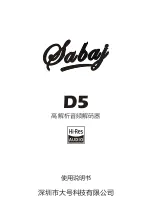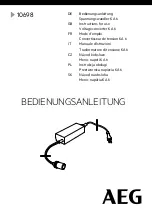
80
MU128 Guided Tour
The actual, physical means of controlling (such as foot pedals, modulation
wheels, etc. on a connected keyboard) are generally assigned to specific
“virtual” control numbers. A few examples of these include the modulation
wheel (at control number 1), foot controller (control number 4), and volume
pedal (control number 7).*
Control Numbers and the Actual Sound
The control numbers described above are in turn assigned to some specific
aspect of the sound on the connected tone generator (for example, to vol-
ume, pitch modulation, dry/wet balance of an effect, etc.). As you might
expect, control number 7 (Volume) affects the volume of the connected tone
generator.
In this example, the foot controller of a keyboard controls the volume on the MU128.
Assignable Controller (AC1)
* On some instruments, the control number for the physical controllers
is fixed; some instruments allow you to assign a different control
number to the existing control. (Refer to the owner’s manual of your
instrument for details. Also for more on control numbers, see the
“Sound List & MIDI Data” booklet.)
MIDI Keyboard
MIDI OUT
"Virtual" controller:
control number 7
(MIDI Volume)
Physical controller
(volume pedal)
MIDI Keyboard
MIDI OUT
MIDI IN-A
TONE GENERATOR
XG
TG300B
PERFORM
MODE
EQ
UTIL EFFECT
PLAY EDIT
ALL
MUTE/
SOLO
PART
PART
SELECT
VALUE
SELECT
VALUE
ENTER
EXIT
SELECT PART GROUP
Strings
Bass
Guitar
Organ
Chrom.perc.
Piano
Ensemble
Brass
Reed
Pipe
Synth lead Synth pad
Drum
Model excl.
SFX
Percussive
Ethnic
Synth effects
PHONES
MIDI IN A
STAND BY
ON
VOLUME
2
PART
VOL EXP PAN
BANK/PGM
REV CHO VAR KEY
A/D INPUT
1
MU PLG-1 PLG-2 PLG-3
Содержание MU128
Страница 102: ...102 MU128 Guided Tour ...
Страница 183: ...APPENDIX MU128 Appendix ...
Страница 193: ...MU128 Appendix 193 English ...
Страница 195: ...M D G EMI Division c Yamaha Corporation 1998 V319100 810ITCRIT5 2 01A0 Printed in Japan ...
















































